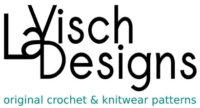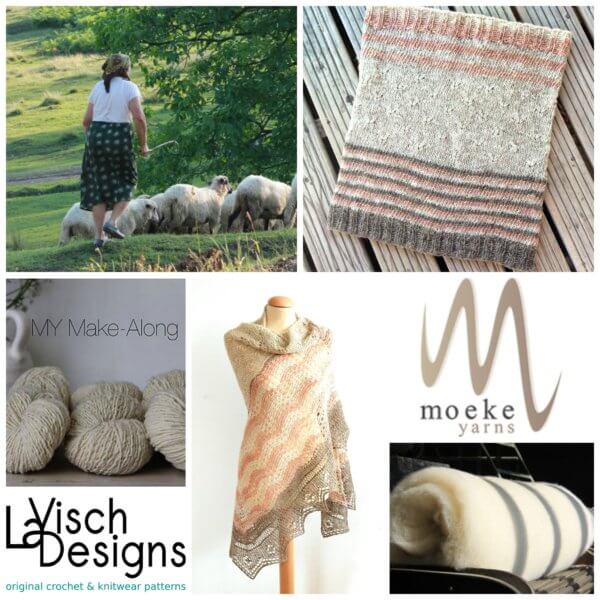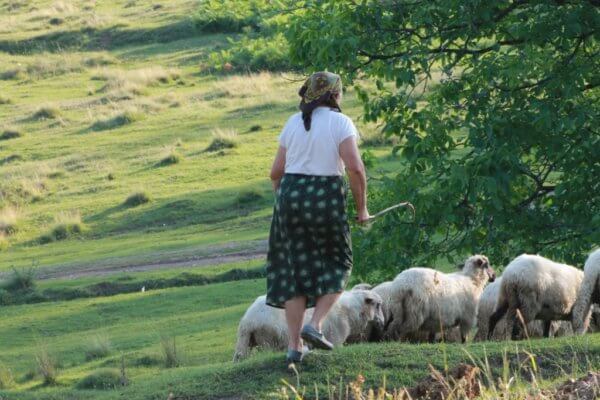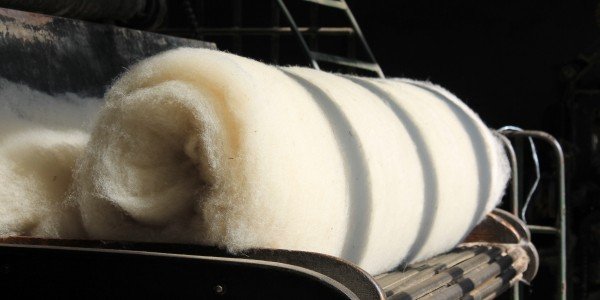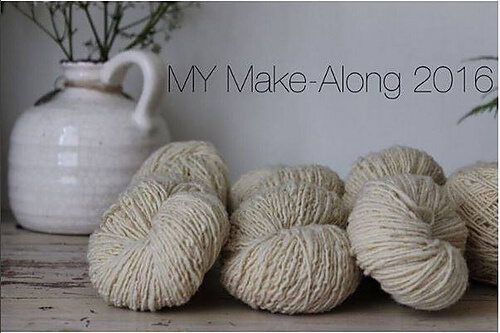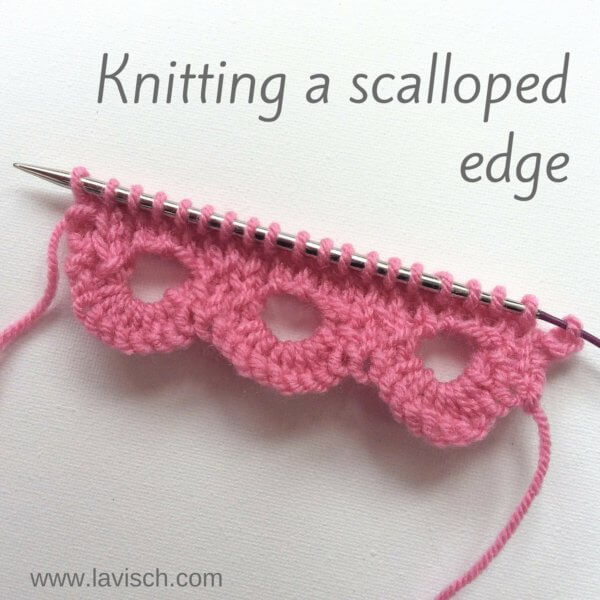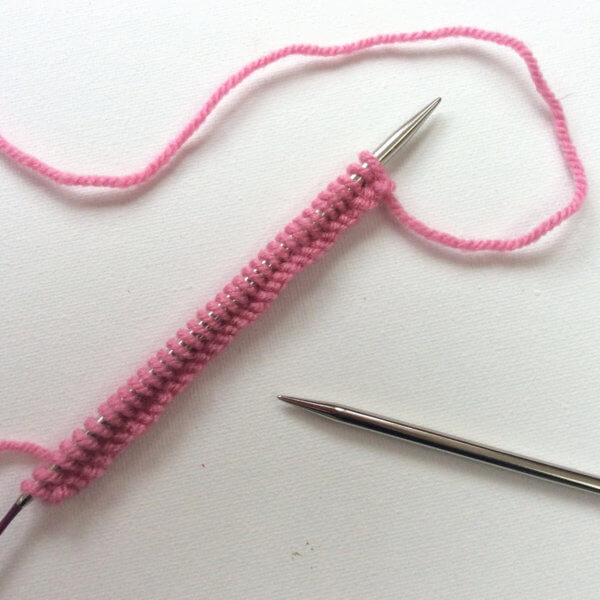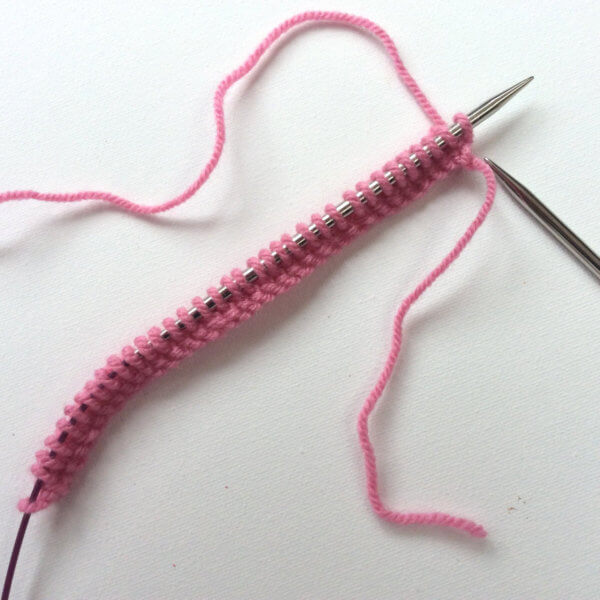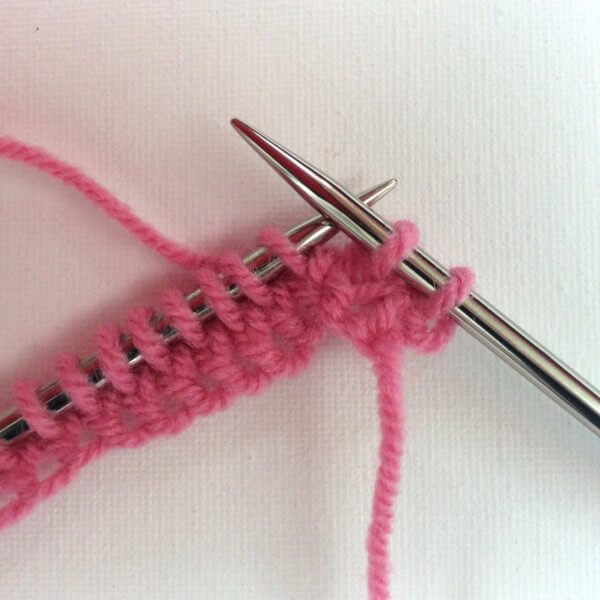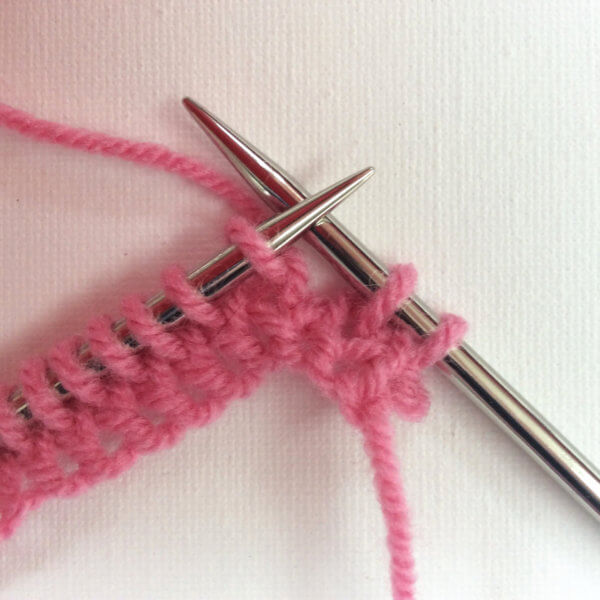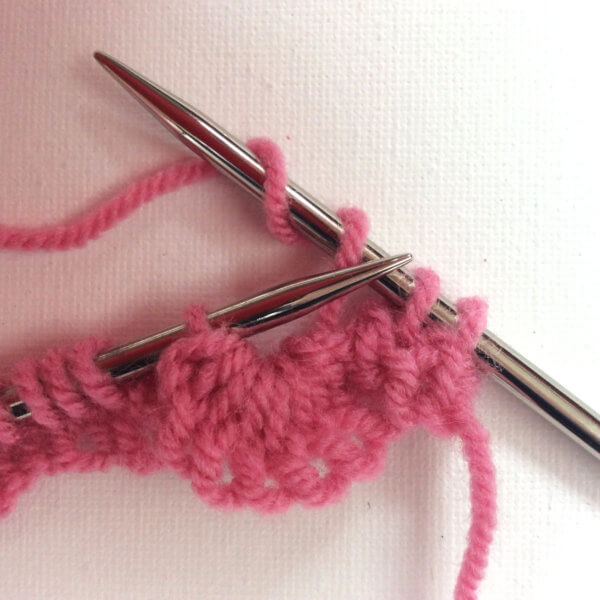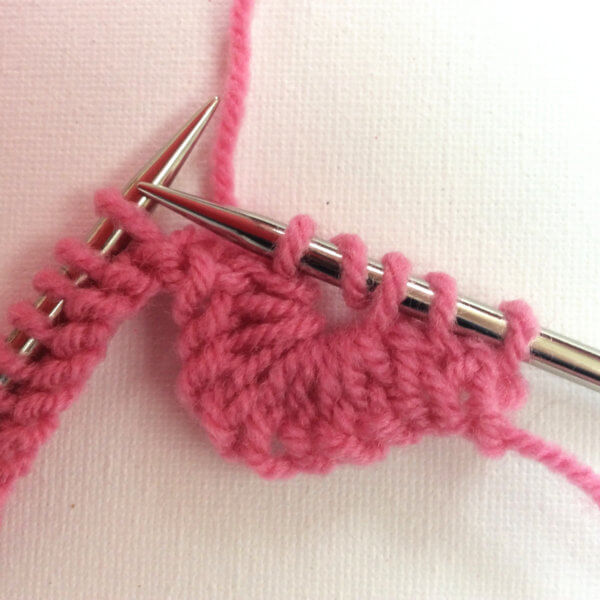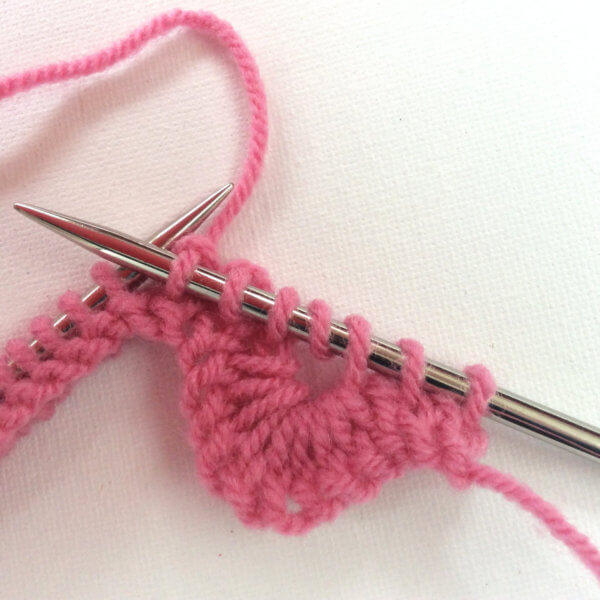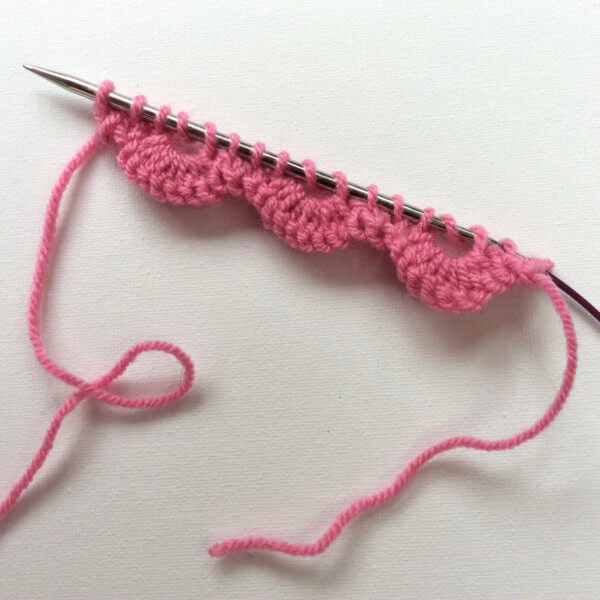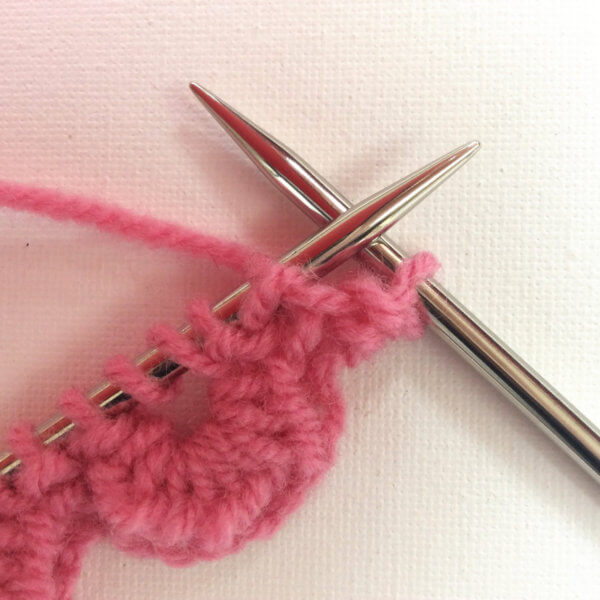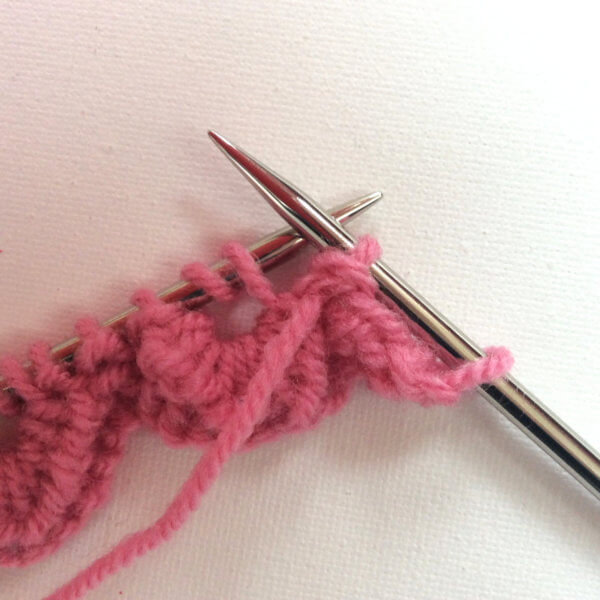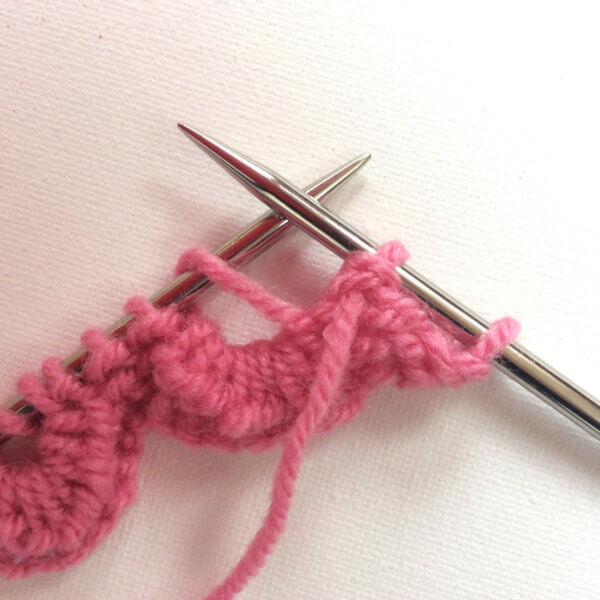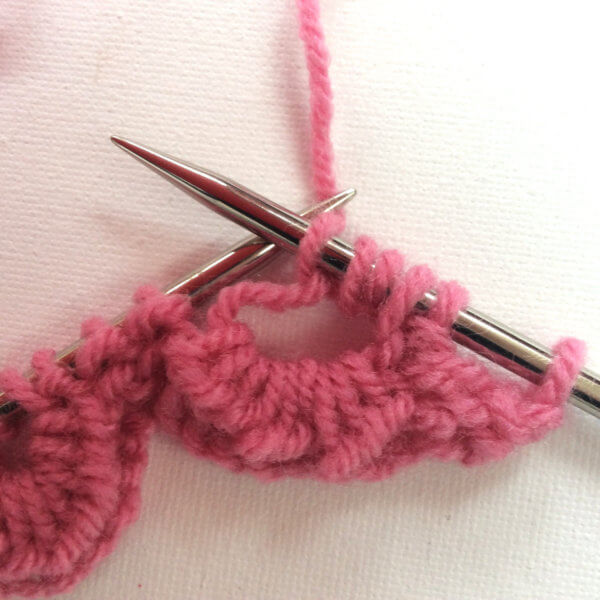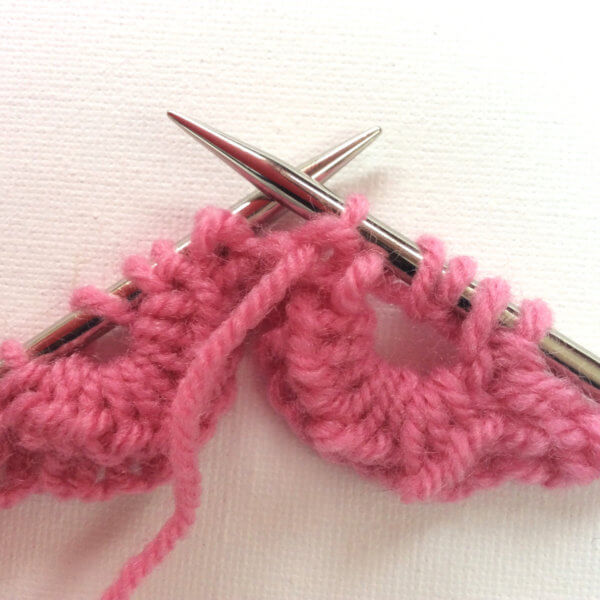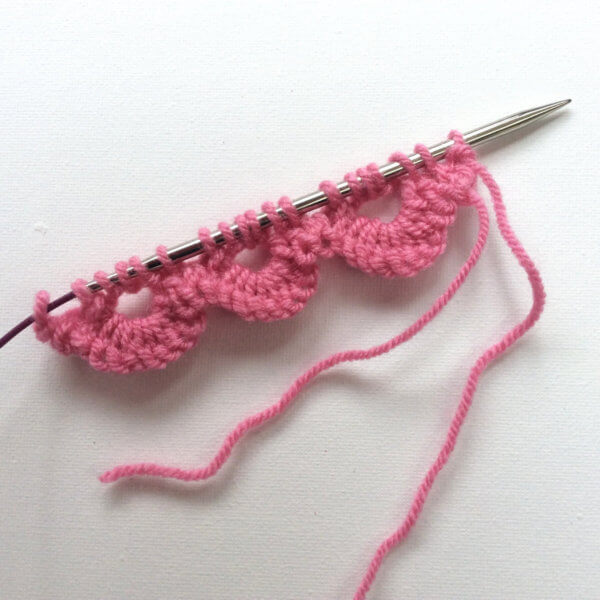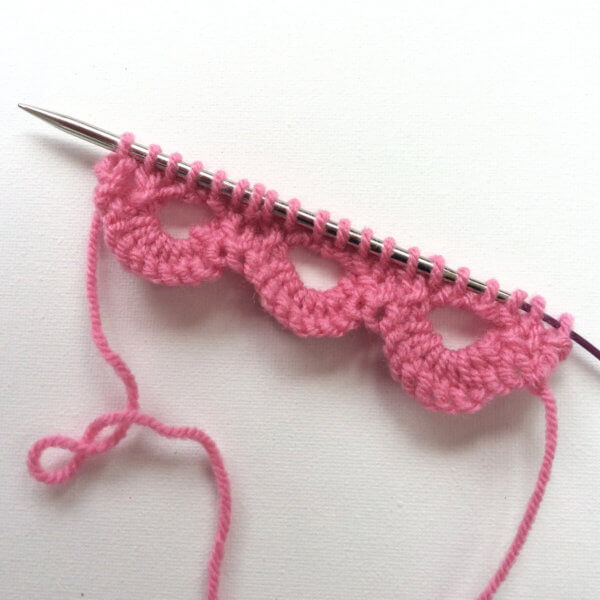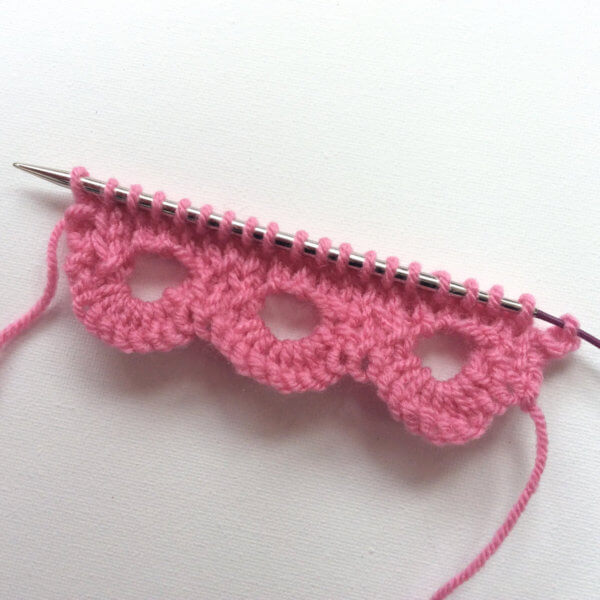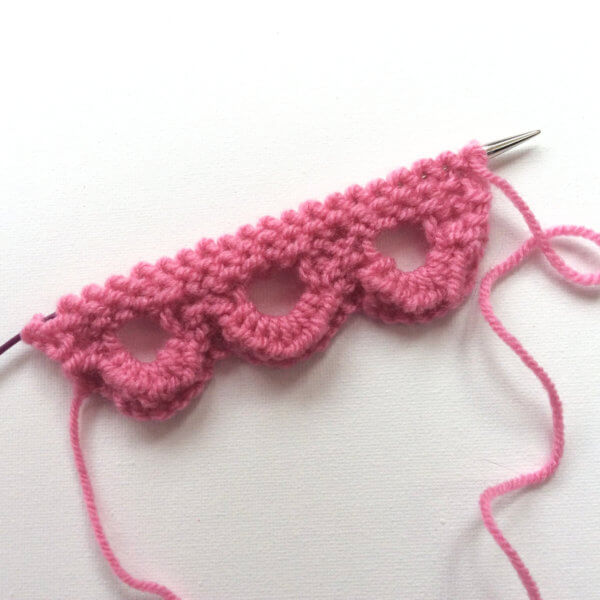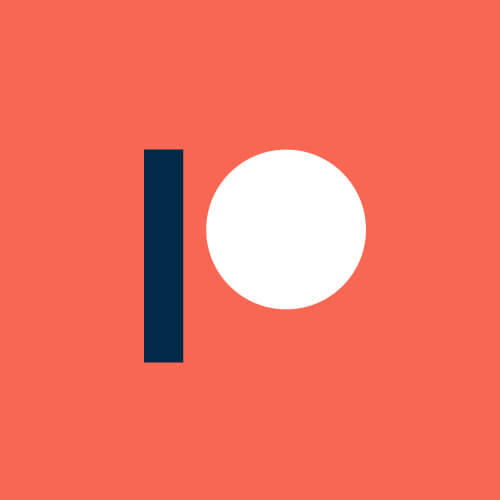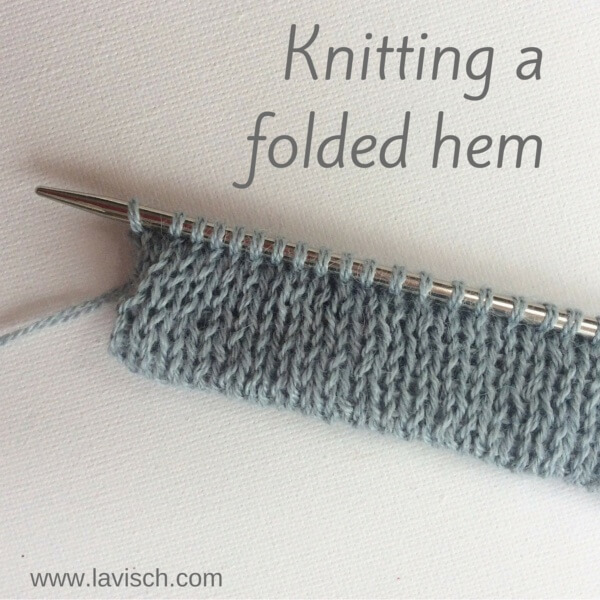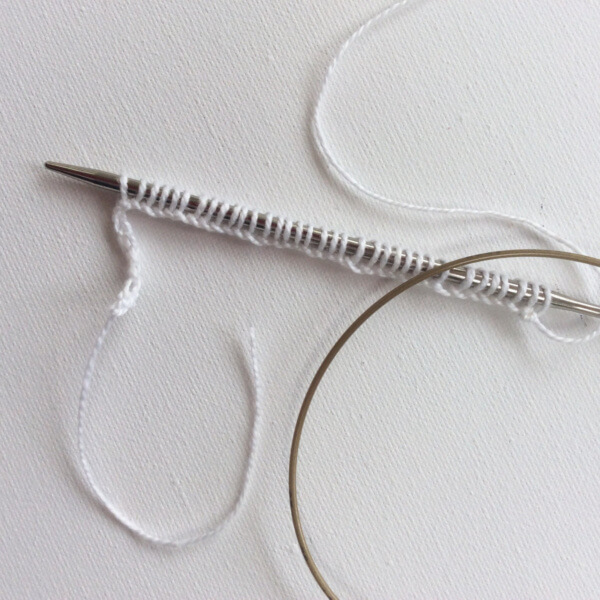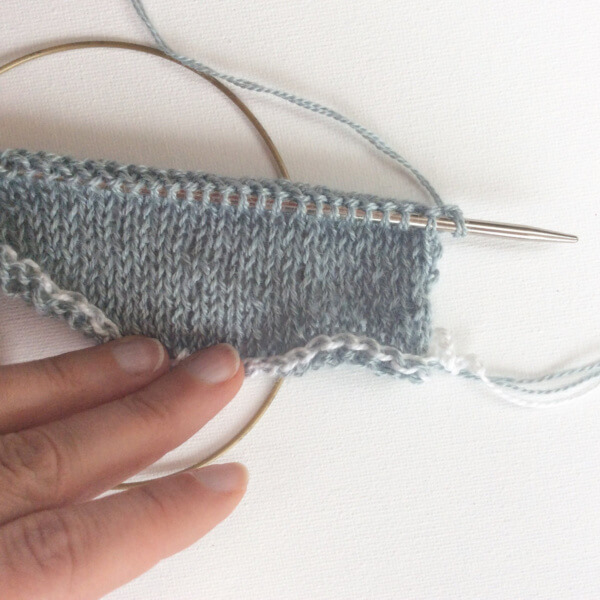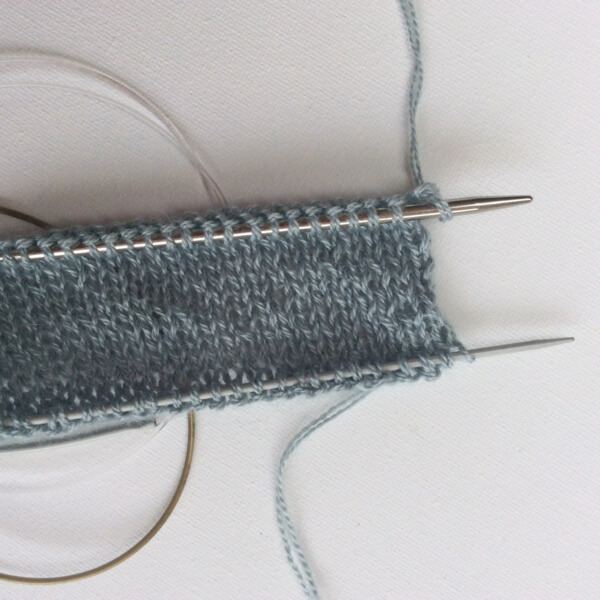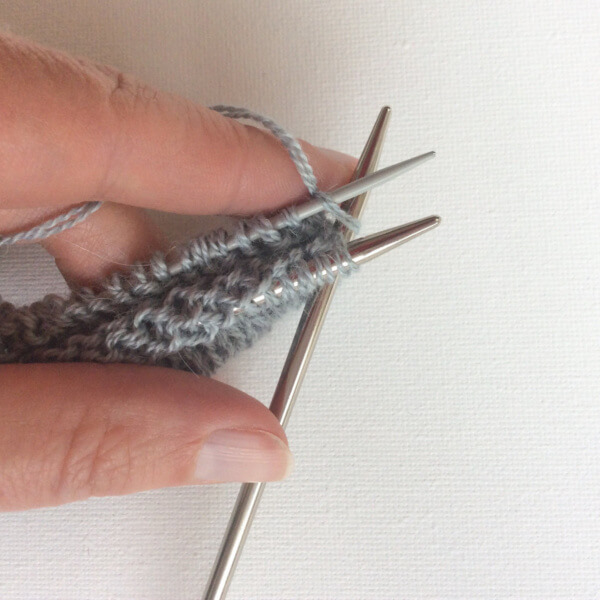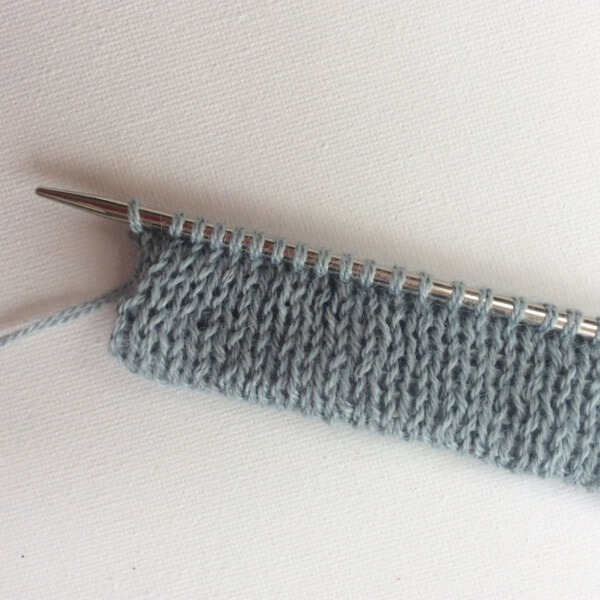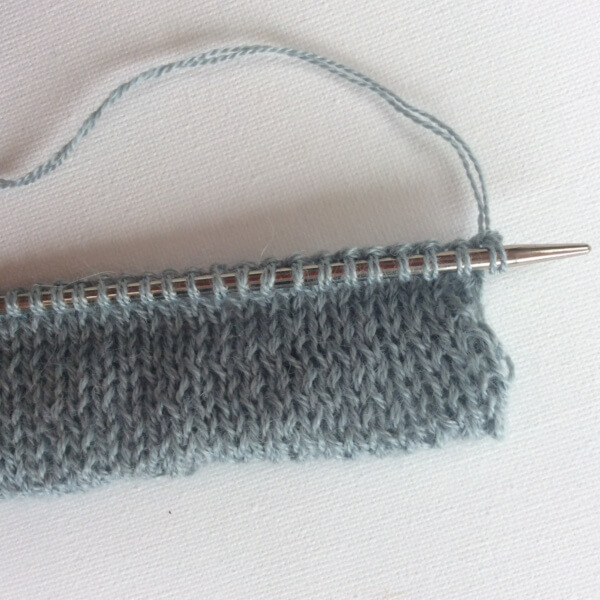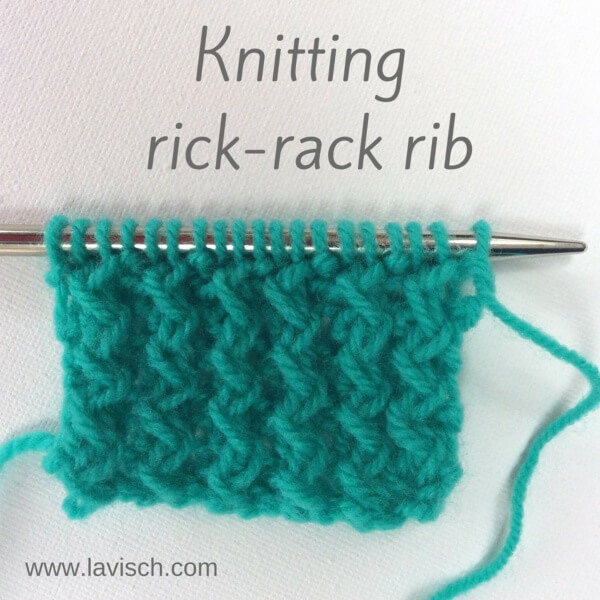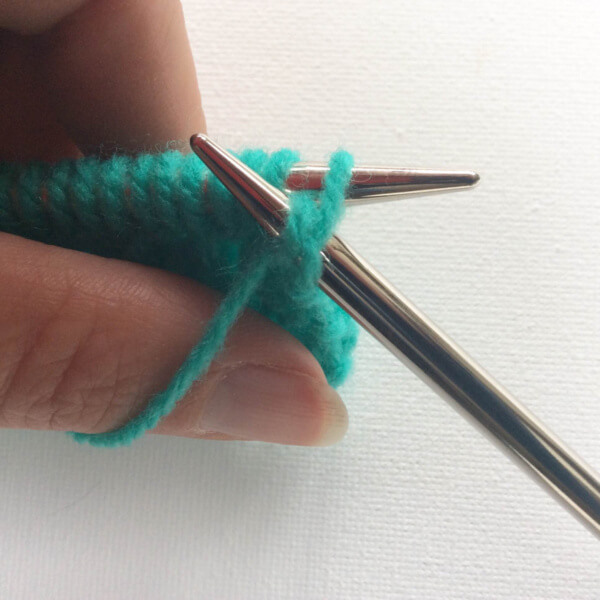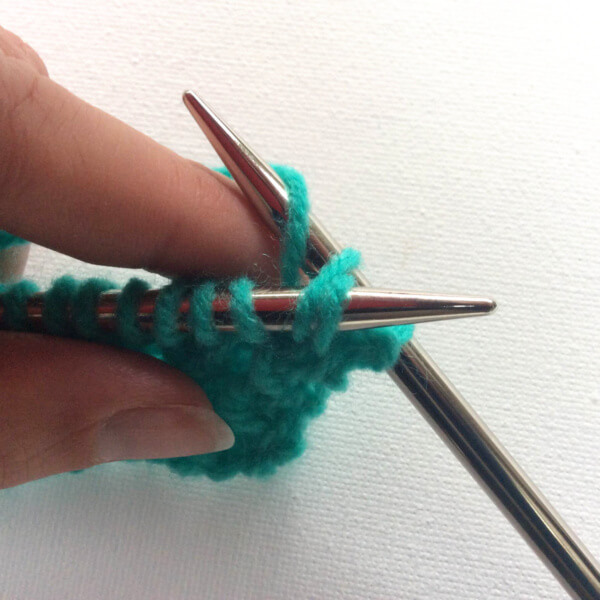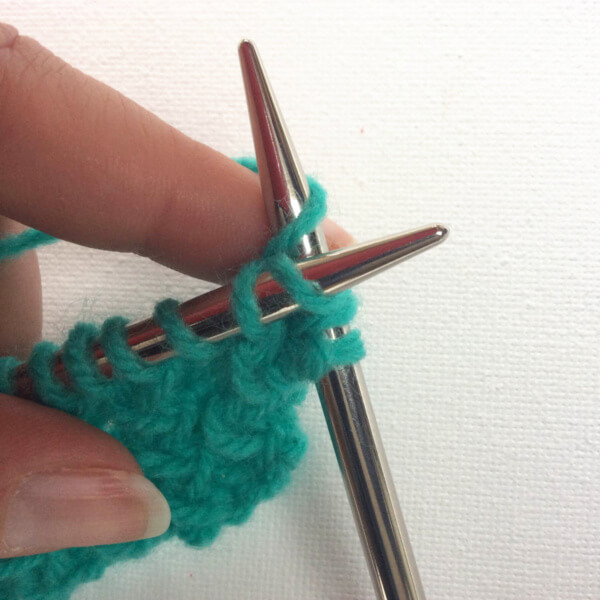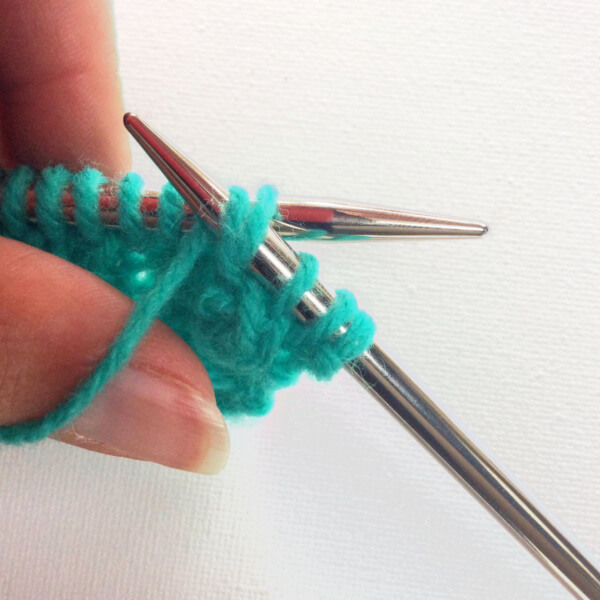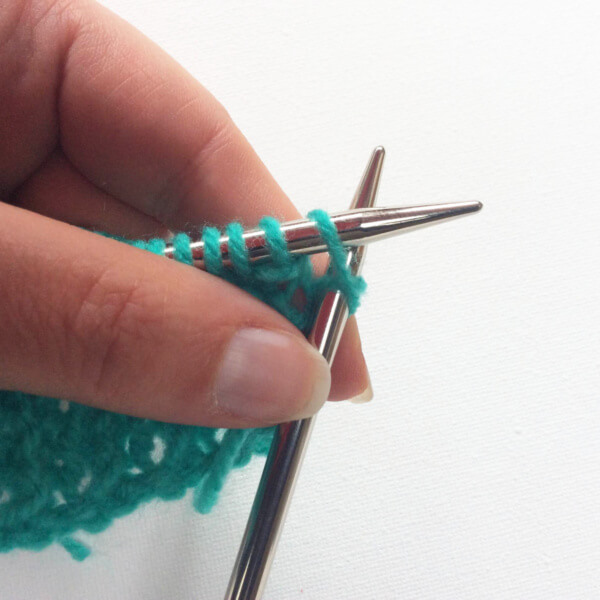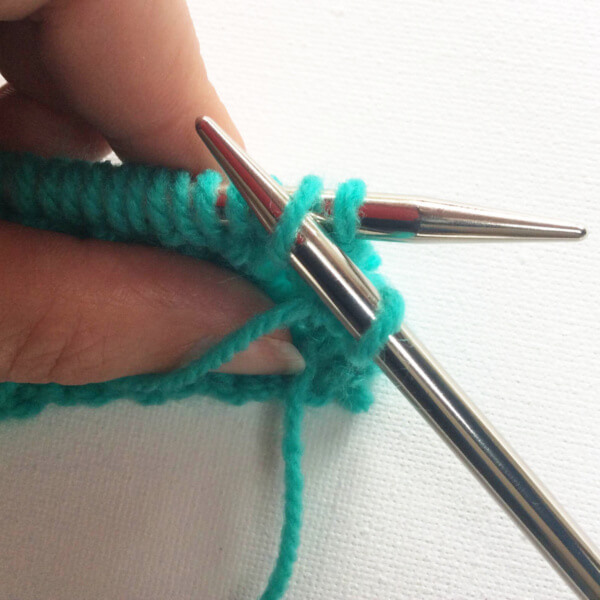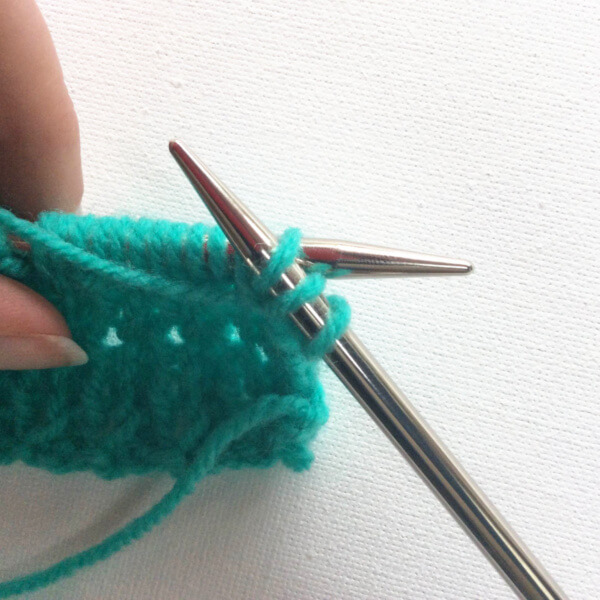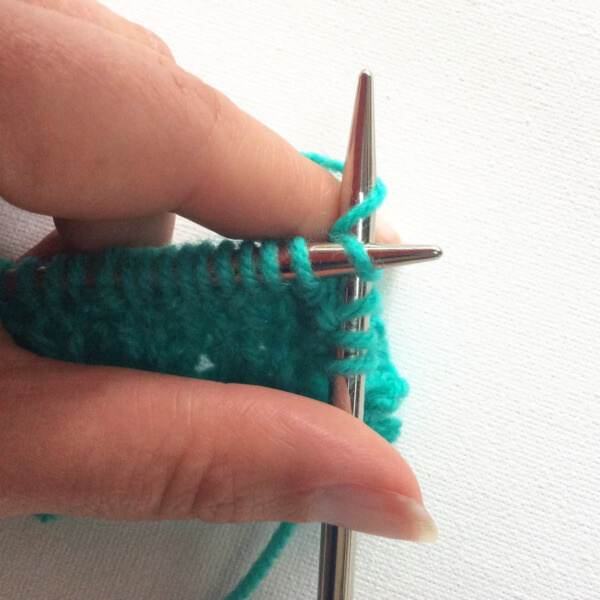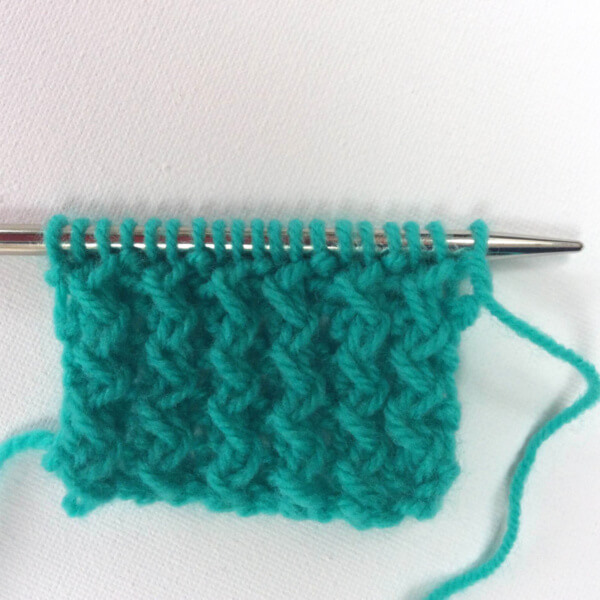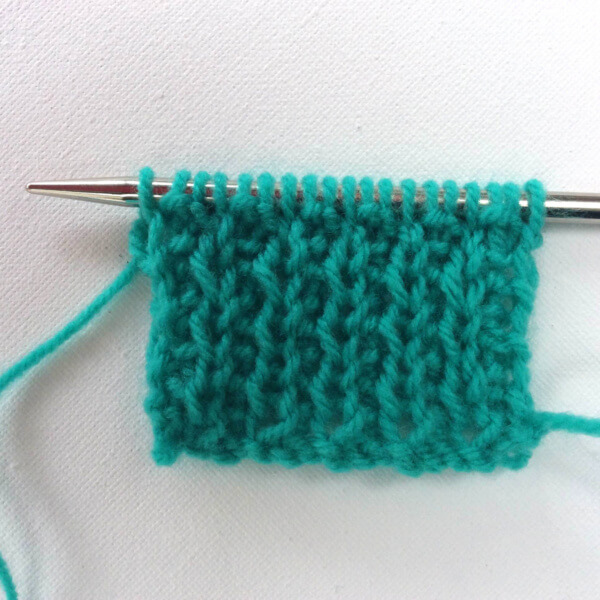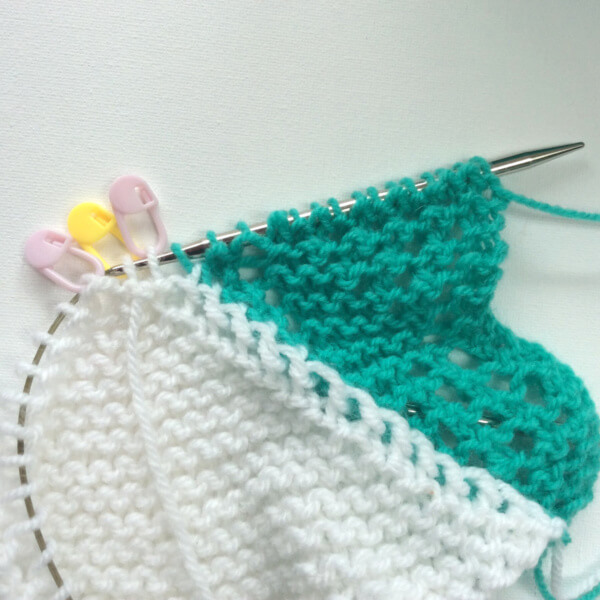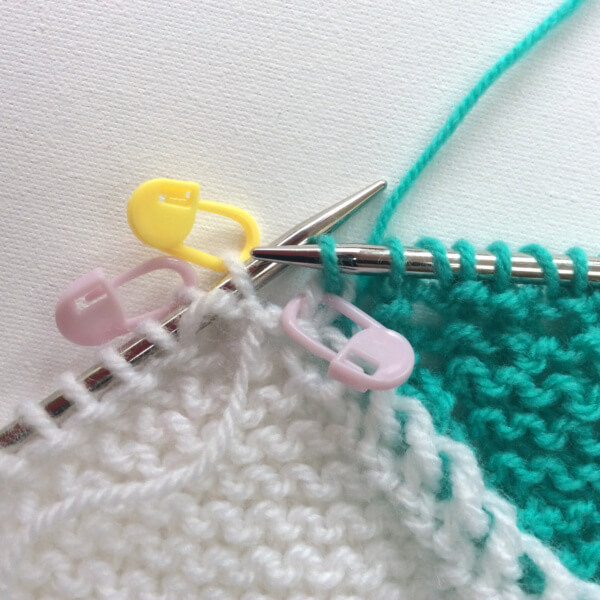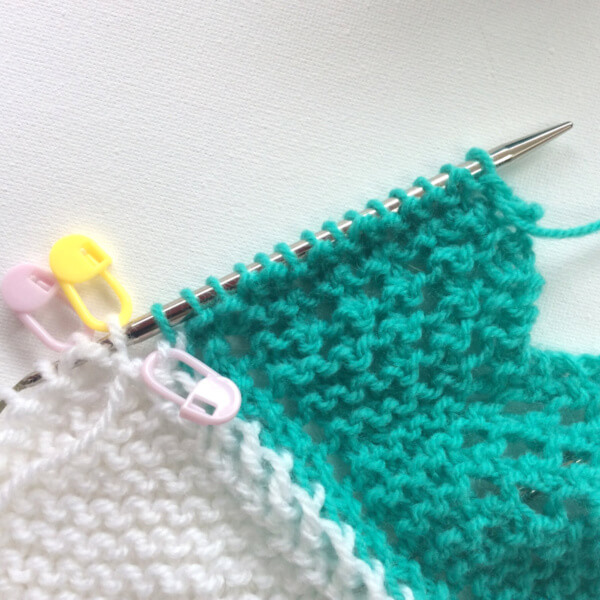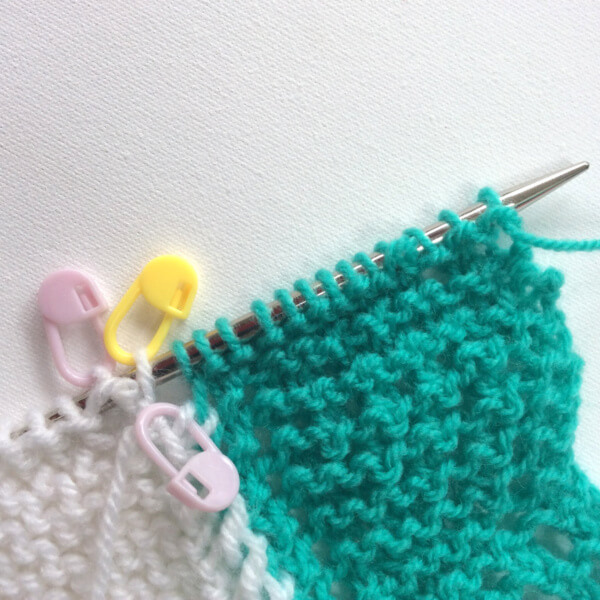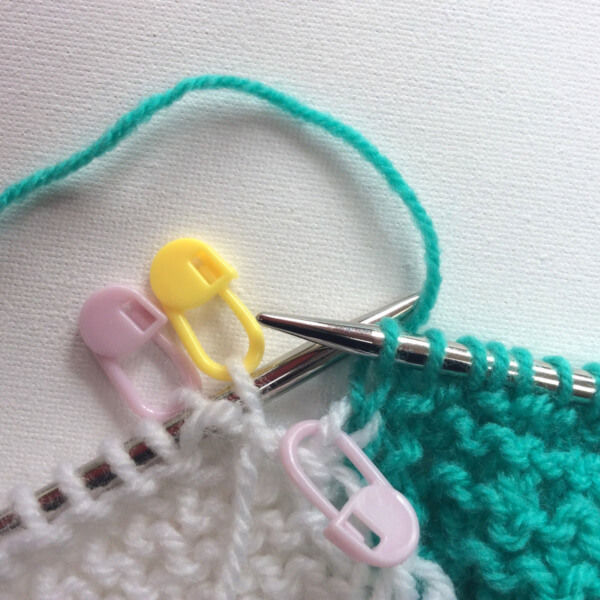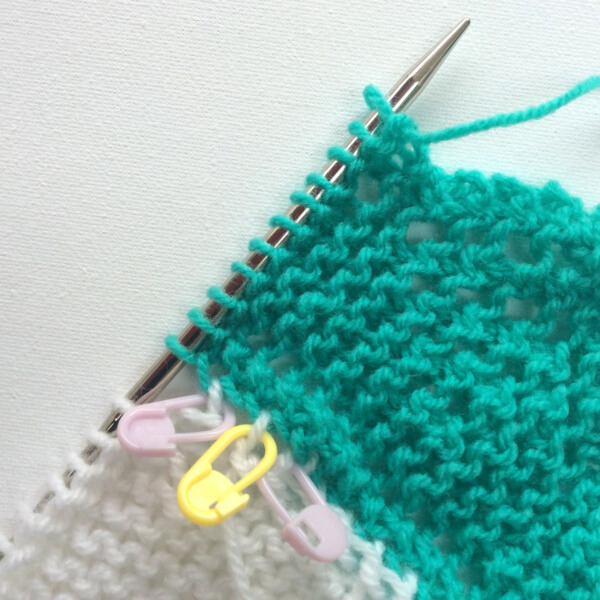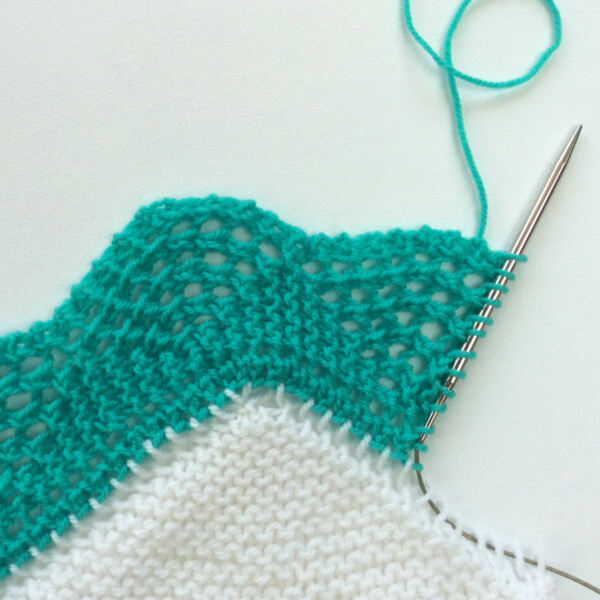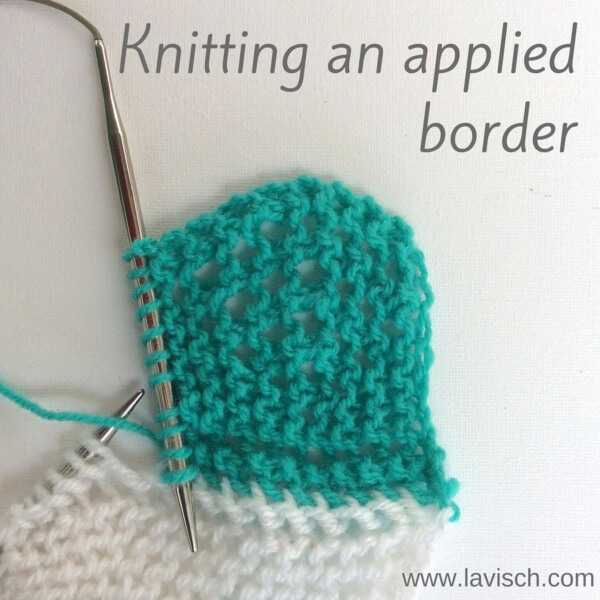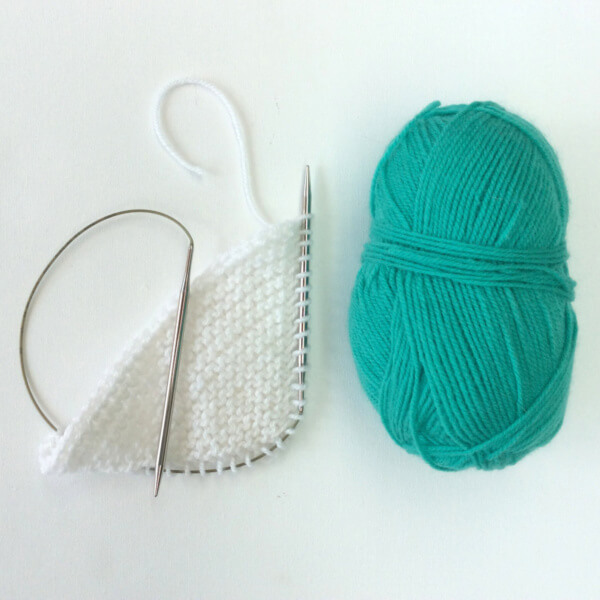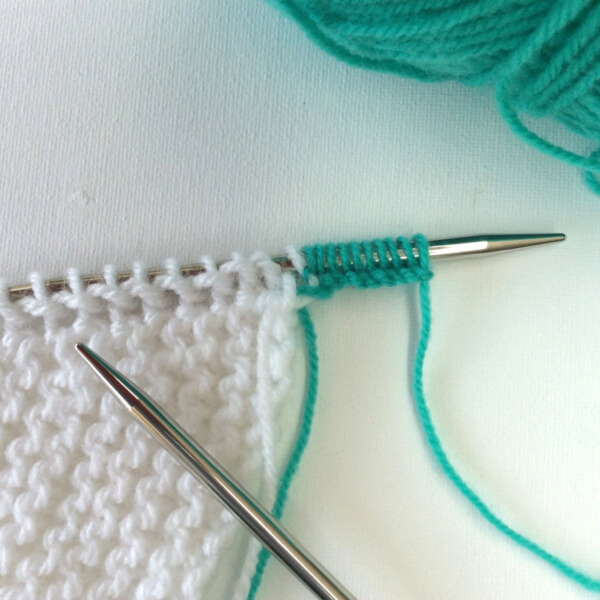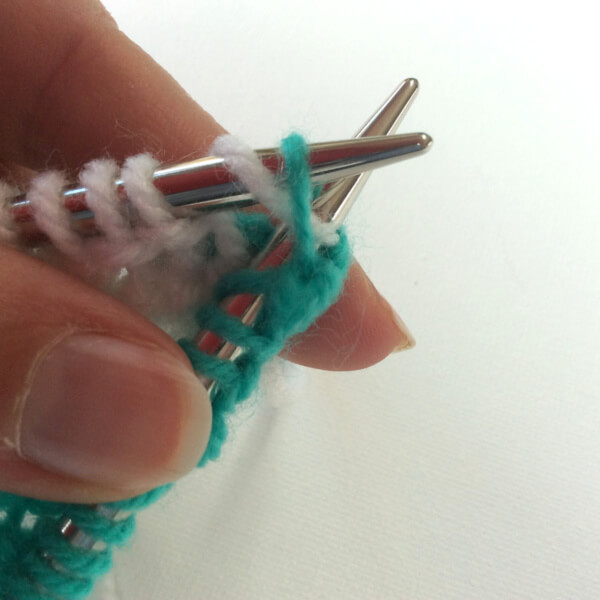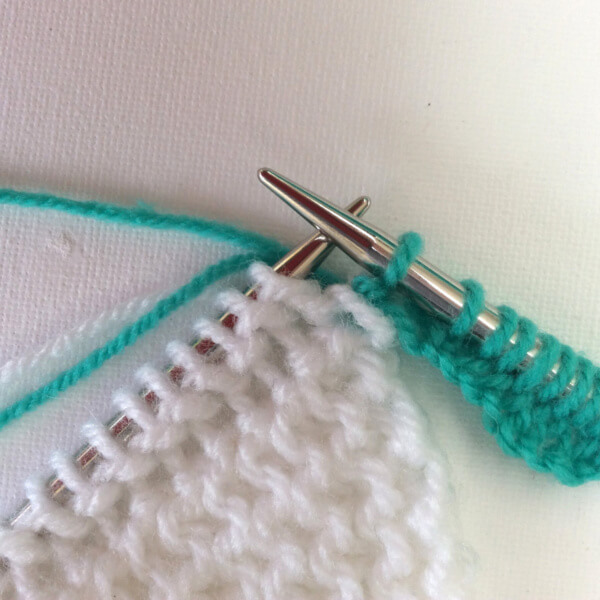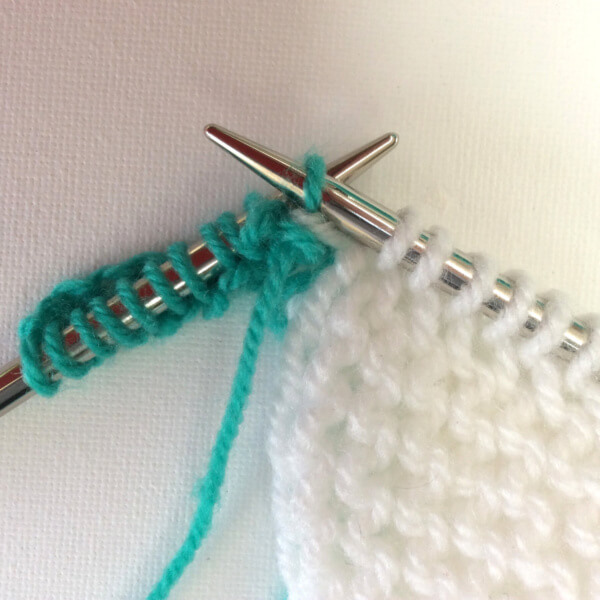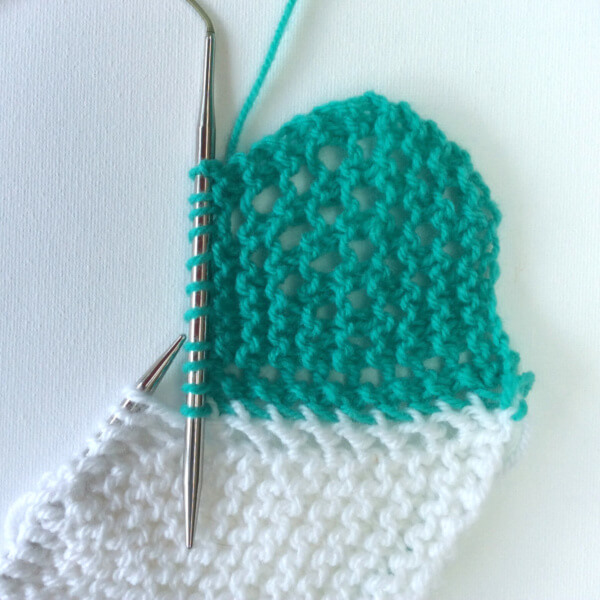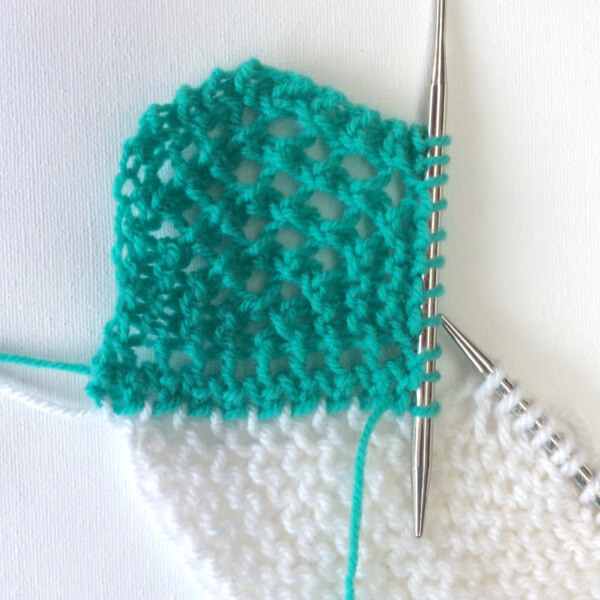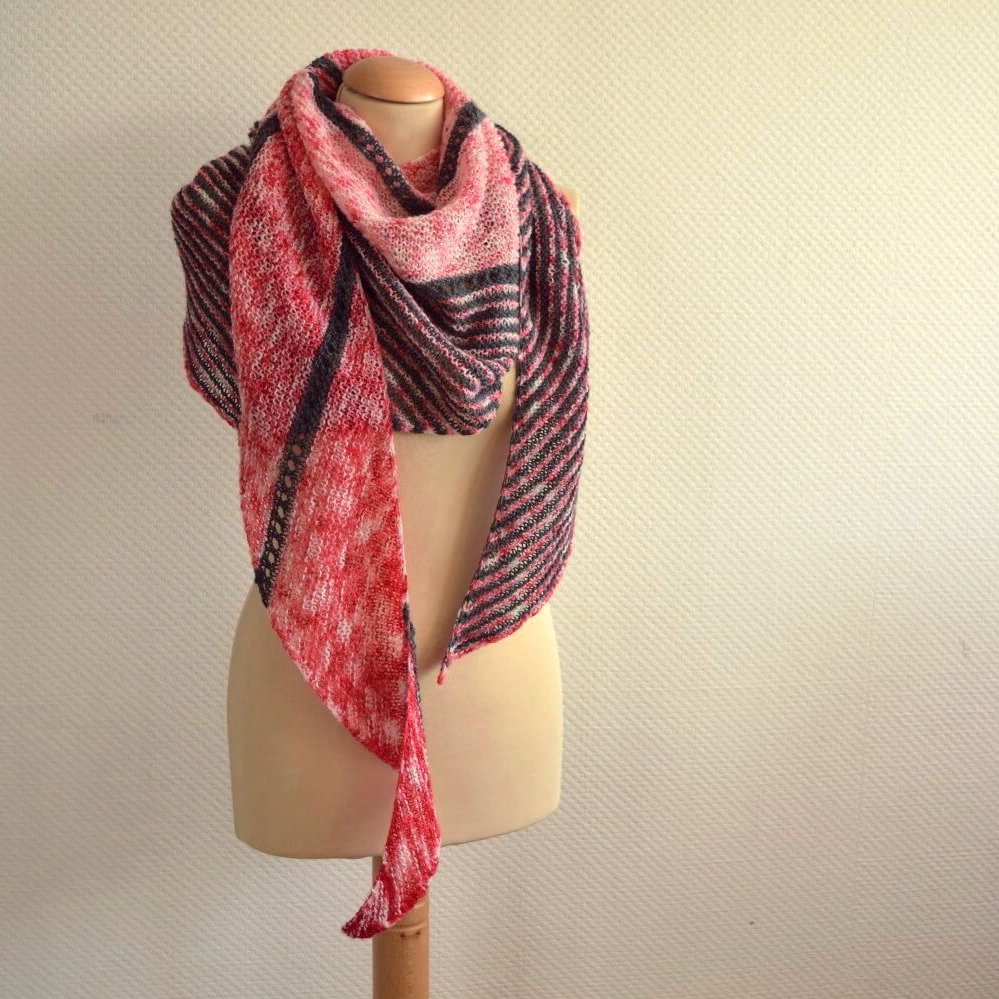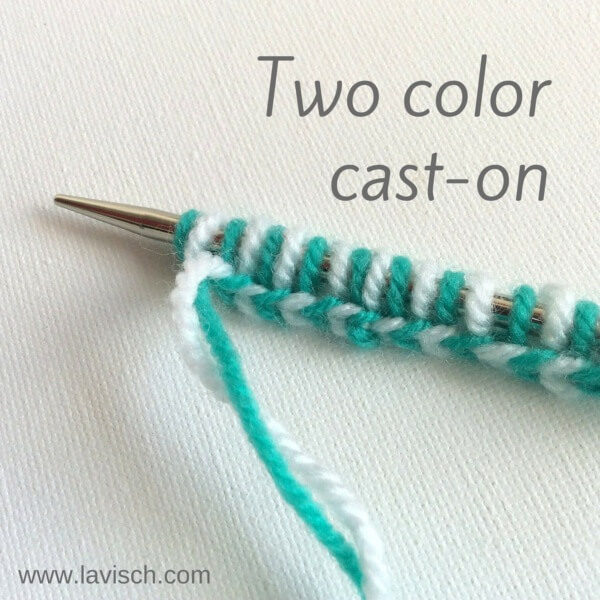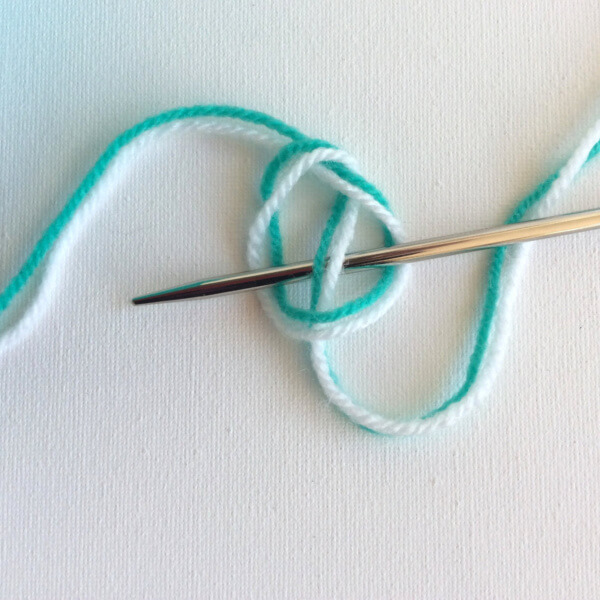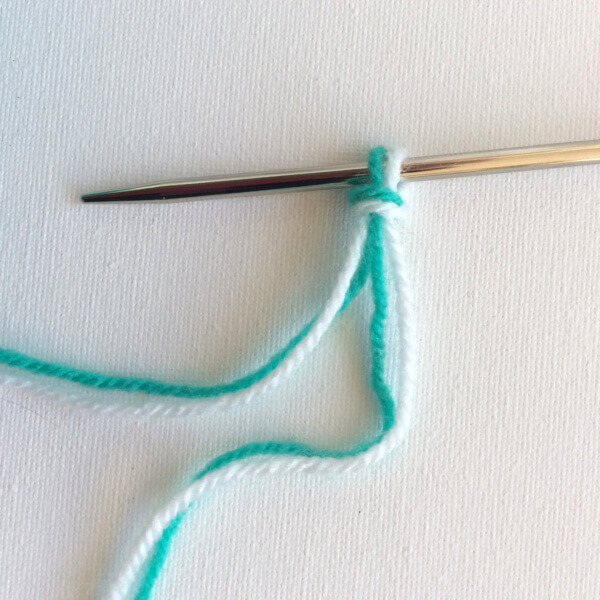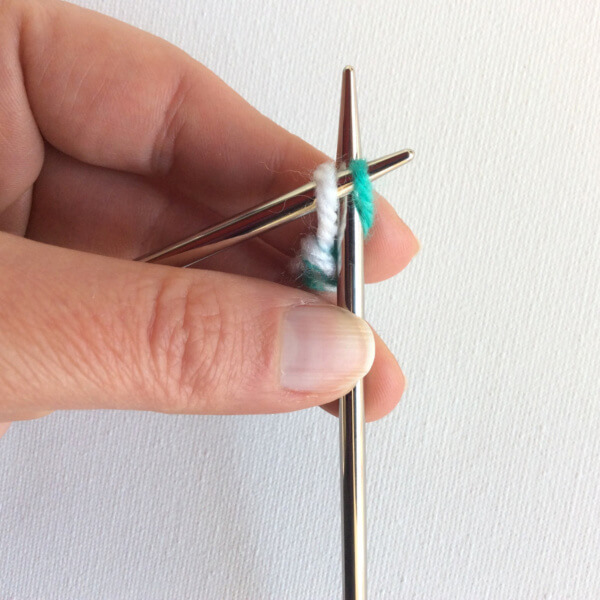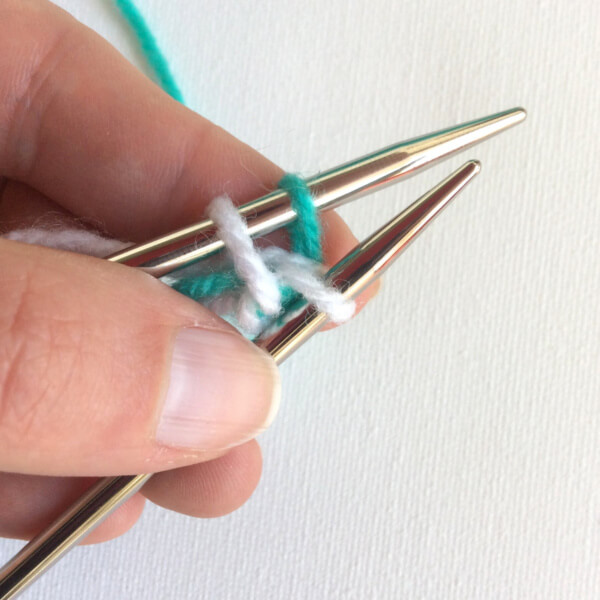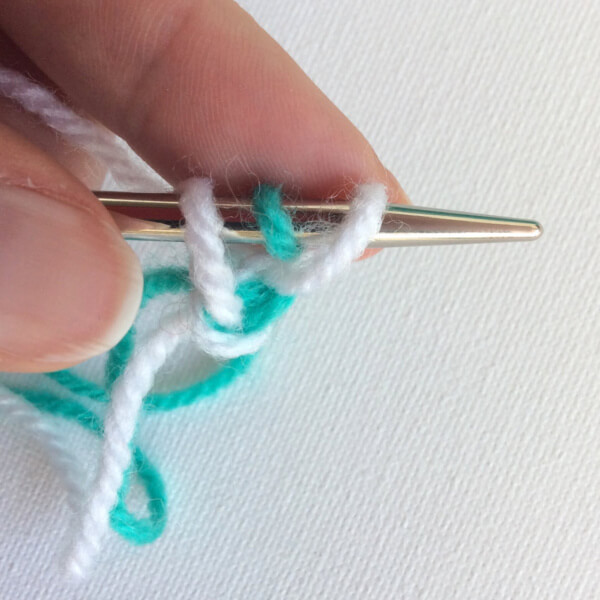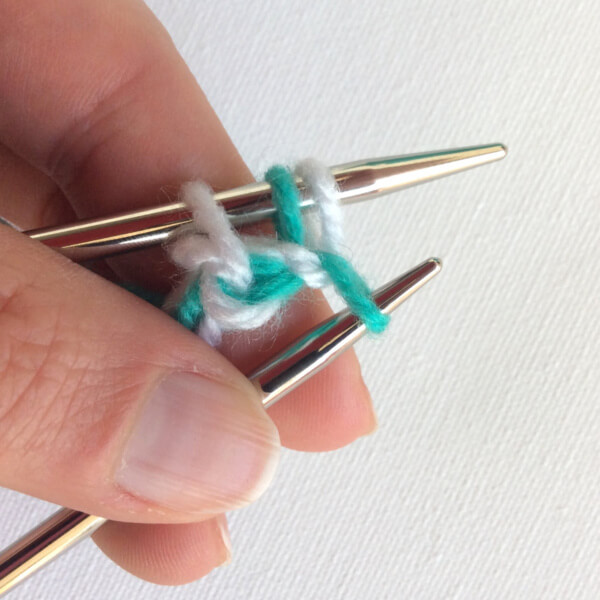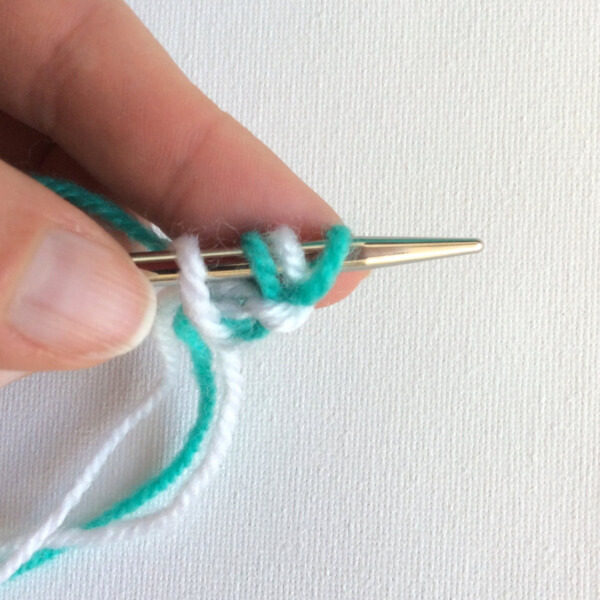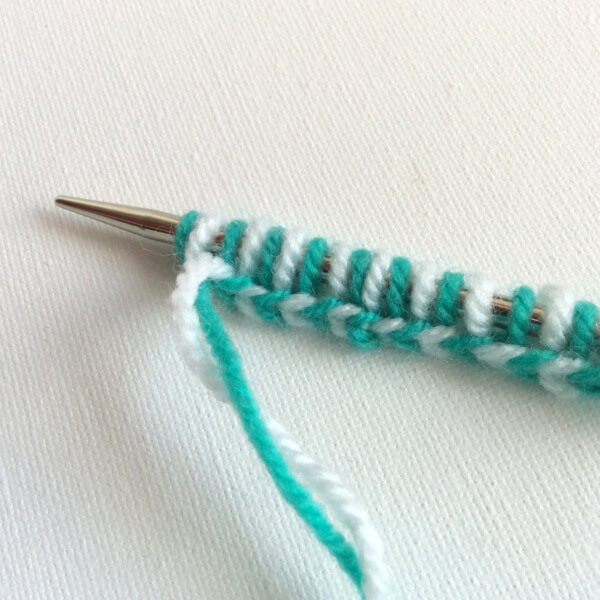elena half hap
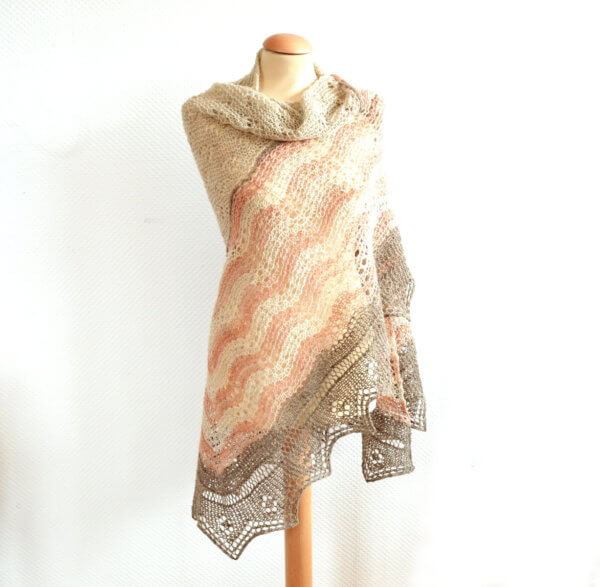
Worked in this lovely rustic yarn by Moeke Yarns, the Elena Half Hap makes for a wonderful cozy shawl. Perfect to wrap up in on a chilly day. Elena is made in the tradition of the shawls from the Shetland Isles, making for a very interesting construction.
Elena starts at one corner of the center triangle and increased until big enough. Stitches are then picked up along the edges and the stunning striped border is worked outwards. Finish the shawl with a gorgeous edging that is knitted on sideways and attached to the live stitches of the border as it is being worked.
Pay what you want: (minimum €6.50)
Size and finished measurements
Size S (L): Wingspan of 185 (215) cm (72 ¾ (84 ½) inches) and a depth of 91 (105) cm (35 ¼ (41 ¼) inches), measured after blocking. The shawl shown is in size L.
Difficulty
Stitches used include knit, skp, yo as well as various increases and decreases. Due to the lace patterning, combined with the applied border this pattern is suitable for the intermediate knitter.
Pattern details
- The Elena Half Hap is worked flat back and forth.
- Gauge is not critical in this design. For the sample shawl measured after blocking: 10.5 sts / 12.5 rows = 10 cm (4 inches) over body pattern in the center triangle. This is a relatively loose gauge for an airy fabric.
- Pattern languages included: English and Dutch (Dit patroon omvat zowel een Nederlandse als een Engelse versie).
- Digital PDF has 8 pages (letter size).
Materials
- Yarn: Moeke Yarns Elena (100% wool; 330 m (361 yds) / 100 g) in the following colors and amounts:
MC: 255 (290) m (278 (318) yds) / 77 (88) g in Natural
C1: 241 (290) m (264 (318) yds) / 73 (88) g in Gray
C2: 152 (244) m (166 (267) yds) / 46 (74) g in Coral - A circular needle size 4.5 mm (US 7), 80 cm (32 inches) long.
- Yarn needle
- 2 stitch markers to indicate the center stitch
- 1 removable stitch marker to mark the RS (optional)
